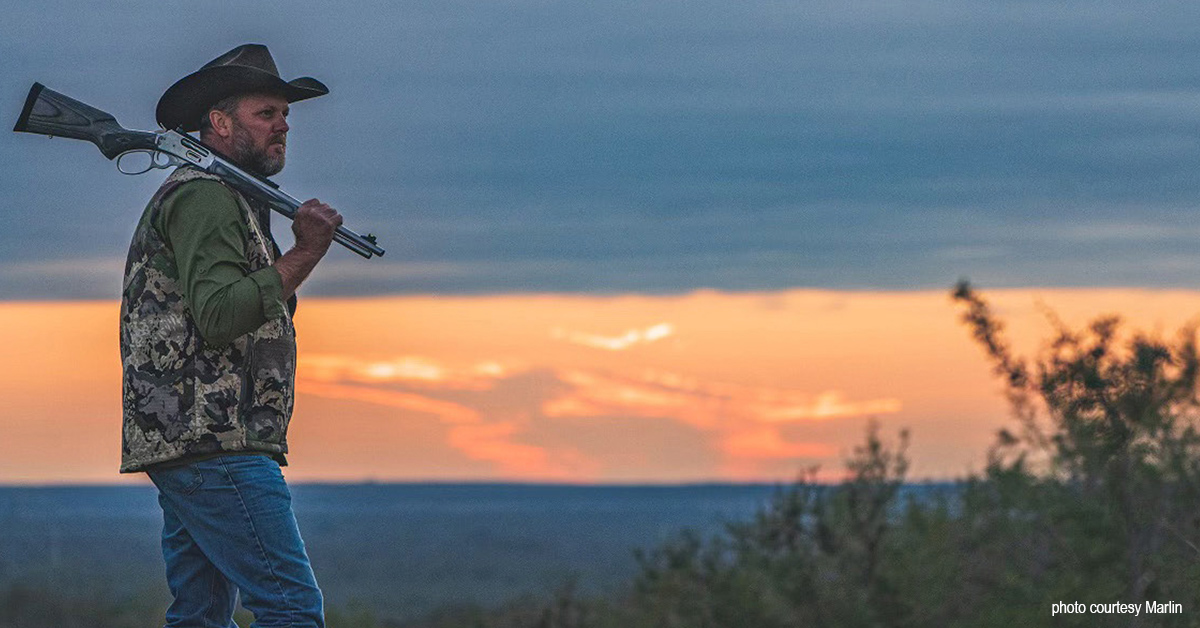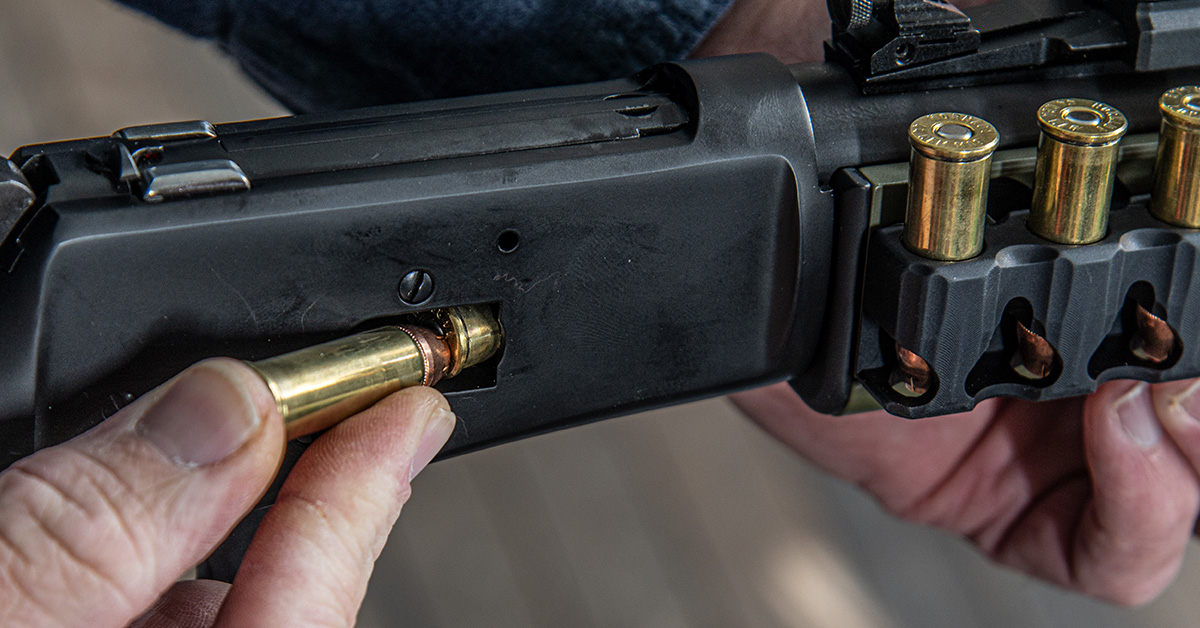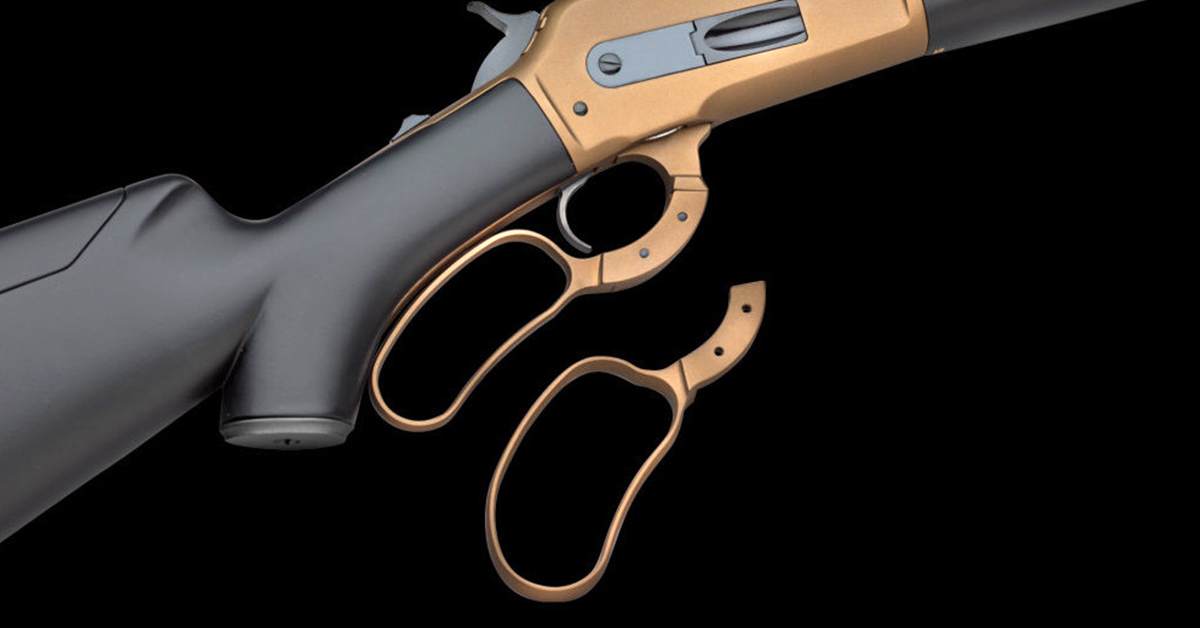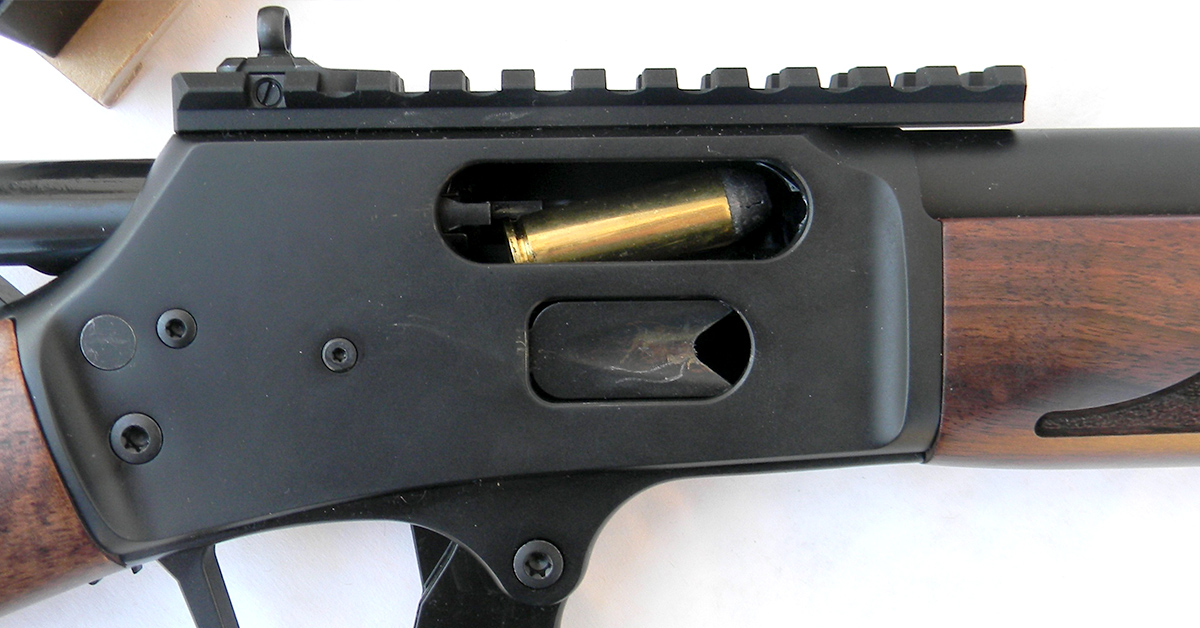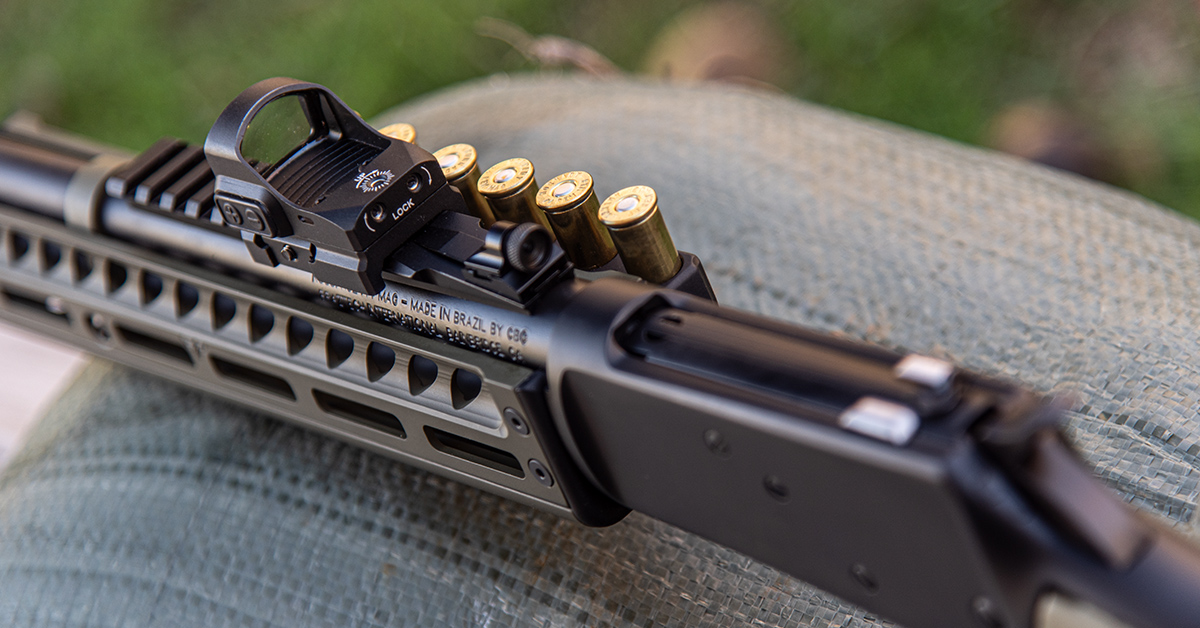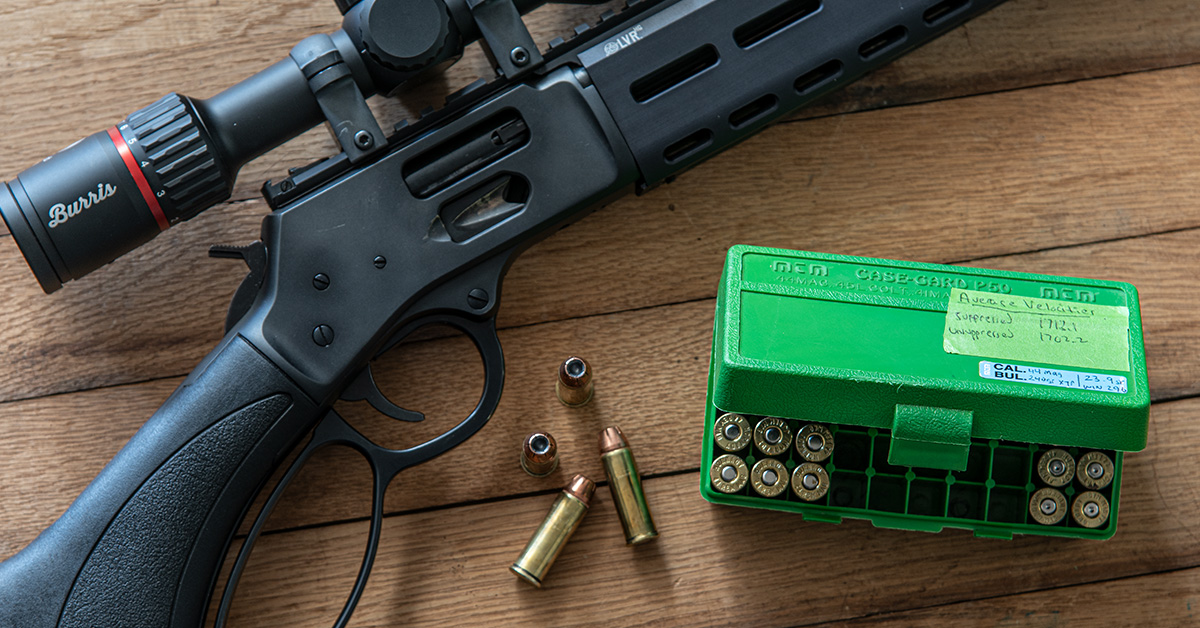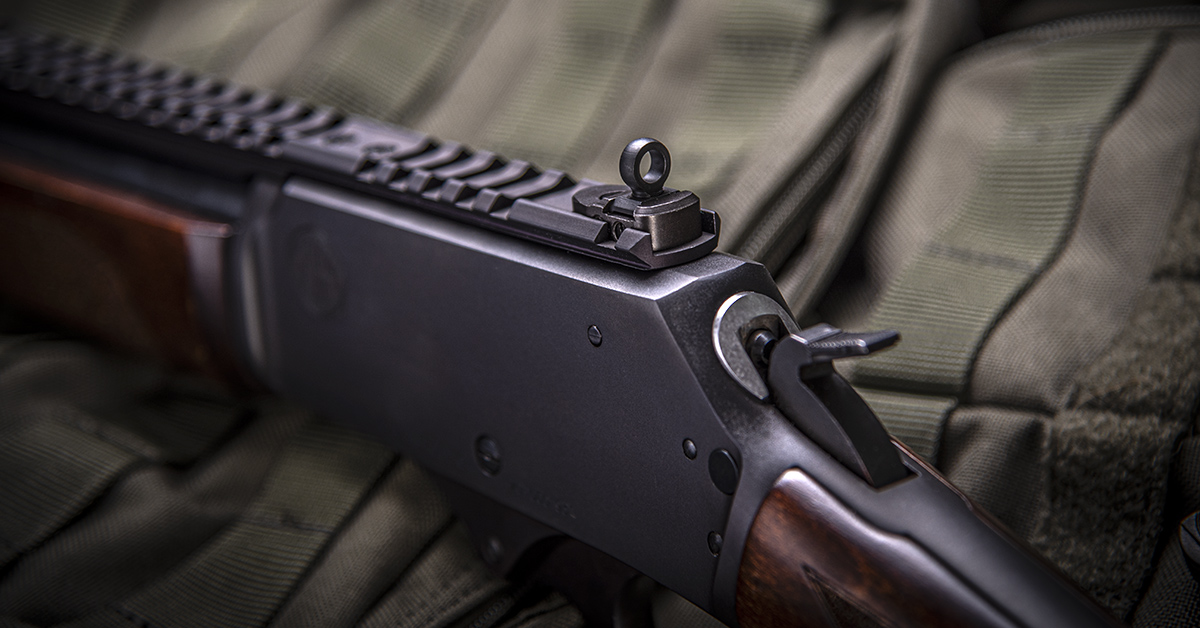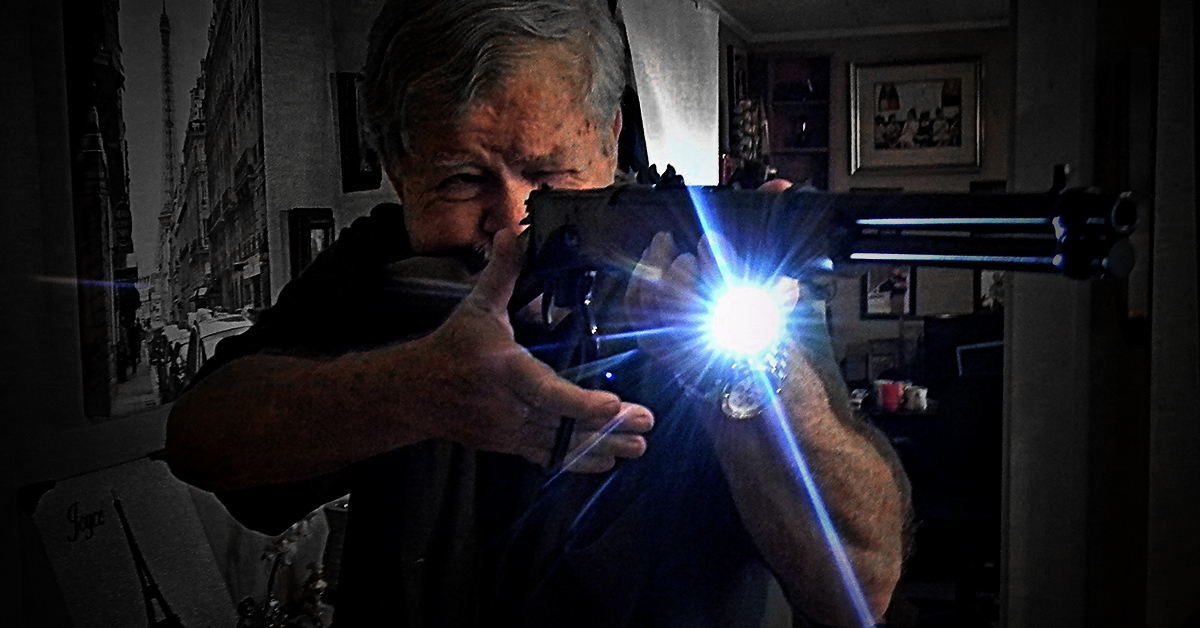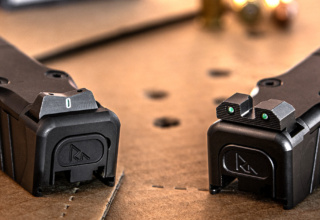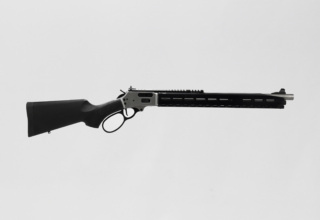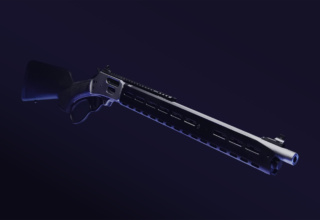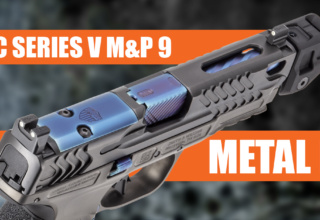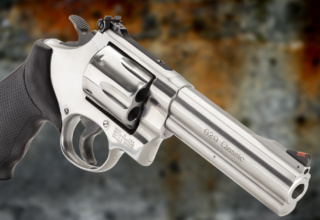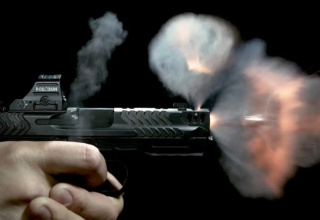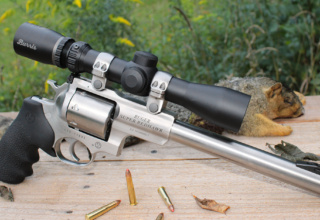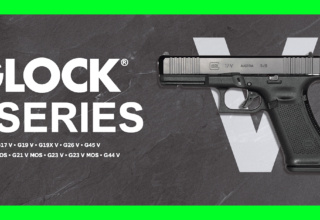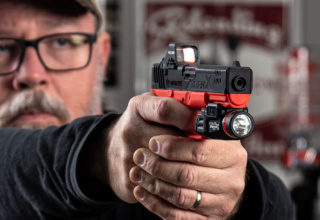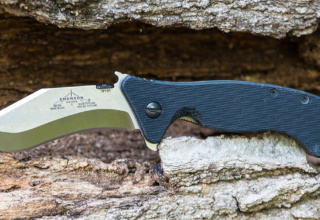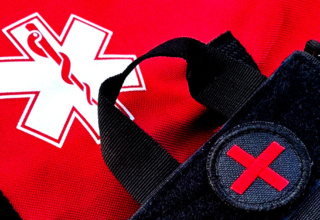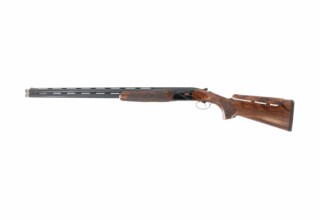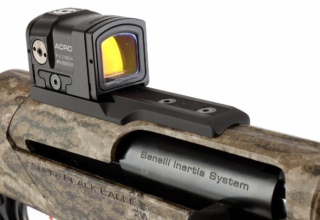Whether you choose a lever-action rifle for home defense, hunting, or for just plain fun, there are several things to consider in order to get the most out of this classic platform
by Bob Campbell
The world is a dangerous place. Even without storms, fires, and earthquakes, the earth is formidable. Some folks live in a bubble outside reality. They don’t like to believe that there is a portion of the population antithetical to their wellbeing. Most criminals are motivated by profit. The subscript is they will kill you.
I worked at a large church for ten years, and you should be afraid of the powers and principalities arrayed against you — but more than twenty years of police work gave me enough nightmares for several lifetimes. I have no application for sainthood, yet I live to help good guys and girls get training and survival skills. One of the best tools for real life trouble is a quality lever-action rifle. A good choice is a specific type that will serve well in hunting, home defense, area defense, and campsite defense — even to defense against large, dangerous animals. There are many ways to get information, sometimes it just comes to you, but the best combination is study and working it out for yourself. The lever action rifle is far from outdated and will serve well as an emergency gun if you have this information and training.
Those of you who are old enough may recall seeing silver screen heroes handle a lever action. If recreation is all you need, then any rifle will do. But there is more to it than that. The lever action isn’t as intuitive as the shotgun, but it beats the handgun, any handgun, hands down in personal defense.
The lever action was originally called a lever action bolt gun, with the bolt action today referred to as a turn bolt. The bolt locks up tight and the lever is used to operate the bolt, removing a fired cartridge case and ejecting it as the shell ladder brings another cartridge up from the magazine. Operation may be quite fast with training. If the choice is primarily for personal defense, choose a modern lever action with good sights. Even though modern examples use far better material than the originals, brass frame rifles, and especially those with the 1873-type toggle action, are less robust than the Winchester 1892 and modern Marlin-based actions. The large loop is fine for recreation. You will find it much slower and less sure in operation than a standard-size ring lever. Just choose one large enough for gloved hand use. If hunting at longer range is a concern, the .30-30 Winchester is a fine all-around lever action cartridge.
For my use, I prefer a pistol caliber carbine. The shorter .44 and .45 calibers are excellent choices for hunting and defense, and the pistol calibers offer greater leverage in the action and more speed for personal defense. The .357 Magnum is usually a lighter-weight carbine. If personal defense is the goal, there are few cartridges more effective or more economical than the .357 Magnum. Further, .38 Special ammunition is fine for practice. While the original cowboy-type lever action rifles are okay as far as they go, a modern carbine is a much better choice. In technical terms, the carbine with superior material, a sight rail with aperture sights and bold front post, and other features represent a gain of function. They are more formidable.
Loading
First, let’s look at loading the lever action. Some have more trouble than others learning to load with a loading gate. The gate is sometimes over sprung. In cowboy action shooting, the individual will sometimes loosen or cut the gate spring to alleviate tension. That’s fine for competition, but if you learn the proper technique, this isn’t necessary. Press the cartridge nose at an angle pointing inward then push the cartridge into the magazine. You do not have to completely press the cartridge into the magazine until you have loaded the last cartridge, then give it a good shove in place with thumb pressure. The magazine is now loaded.
Combat loading is when you are firing and you have expended part of the magazine load and wish to top off the magazine. Access a cartridge, press it into the gate, and load the cartridge completely or partially press one in and then top it off with another cartridge. You may stay in business quite a while using this technique.
For safety’s sake, learn how to unload the lever action. I am not the enemy of the add-on safety of modern lever action rifles. If you don’t like it, ignore it. With the safety applied, you may work the lever and run cartridges through the action to unload. It is possible to depress the loading gate and work cartridges out in the same manner you would with a tubular magazine shotgun, but it isn’t something I have mastered. Large fingers don’t work well. Still, it is simple enough to unload the rifle without chambering the cartridges.
Don’t neglect practicing lowering the hammer on a loaded chamber. Carefully control the hammer as you press the trigger. That manual safety just may be a good thing in that situation.
Working the Lever
Working the lever action properly isn’t an art but a skill. The ring lever may be slightly oversized, but it should not be a big loop. With the big loop, if you really like it, be certain to operate it by applying pressure toward the front. We may make some allowances for looks, I suppose, but for nitty gritty function, the big loop isn’t something we should use.
When you press the lever, keep three fingers in the lever; the trigger finger remains straight. I have seen students move the trigger finger into the loop, work the lever, and then replace the finger on the trigger. That is slow. Do it the right way. Don’t slam the piece hard but work briskly and smoothly, and press the lever forward, not down, and work it back quickly. Don’t break the stroke; work it smoothly.
Also, don’t work the lever slowly, trying to be quiet or anything like that. You may have a short cycle. There is some expertise involved. There is no more reliable system than a pump action shotgun or a lever action rifle, but either may be short cycled. You may practice operating the lever at home with good safety rules in place.
Keep It Running With Good Ammo
Not long ago, a correspondent reported short cycles with his Winchester .30-30 and nose diving with handloads using the Speer 100-grain TMJ — a neat trick for a light load. I asked if the rifle fed with factory ammo. He replied, “I don’t use factory ammo.” Since I am still considering trying for sainthood, I did not disabuse myself of further advice, as was my first impulse, but reminded him that overall cartridge length is a tricky thing, and a too-short cartridge may not feed.
With pistol calibers, care must be taken. No one would expect full wadcutters to feed in a lever action rifle. When working up a companion load for the .44 Magnum revolver and Marlin 1894 carbine, I discovered the heavy crimp I used on the revolver would not always allow chambering in the lever action rifle. I needed a lighter crimp with the 255-grain hard cast Keith-style SWC.
More to the story.
Despite common wisdom, the .44 Magnum load I topped out at with the revolver showed high pressure signs in the carbine. I had to drop the powder charge a full grain. This meant that a companion load would mean a lighter load in the revolver, reducing the revolver’s potential. That’s fine for range work. Commonly held beliefs do not always apply. Watch your crimp and be careful with load data. Most factory ammunition will feed slickly into a lever action rifle. Just be careful with your handloads and remember you are loading for a rifle not a handgun.
Similarly — and this is from experience — a load breaking 1250 fps with a 255-grain bullet in the .44 Magnum revolver will clock around 1750 fps in the rifle. But if you use a slower-burning powder in your handload and tailor the load to a rifle, you will break 2,000 fps. This slower burning powder load will only be good for 1090 fps in the pistol and create a huge fireball of unburned powder! I could do a piece on the differences, but if you use factory ammunition, the difference isn’t so much. I don’t worry about it and seldom carry a handgun and carbine in the same caliber. It works for me.
Feedway jams are terribly difficult to clear in a lever action rifle — unless you have the new S&W 1854. In that case, simply release the magazine tube from the rifle and proceed. So, watch your ammunition overall length and crimp.
Just in Case
If you have a consistent feed problem in a Marlin-type action, remove the lever and bolt assembly. Rotate the rifle upside down. The carrier is in the bolt runway. Twist the carrier using small pliers until it is simply pulled out of the rifle. Bend the carrier up using a padded vise and hand tools. About .020 up at the tip works. So-modified, the rifle should feed .44 Special in the .44 Magnum just fine, and .38 Special in the .357 Magnum. If the rifle works well as issued, don’t monkey with it.
Aiming
Once the rifle is sighted in, don’t worry about bench rest shooting. Get up on your hind legs and get to shooting and moving. If you stand still, you will get your butt chapped. I am a directed learner. I learn from motion and repetition more than illustrations. Get to the range and get to work. Loosen your knees and let your spine flex. Don’t be rigid. Small groups are not the goal. Hitting the target is the goal.
Aiming the lever action rifle is like aiming any other rifle, except it tends to be faster than a bolt action rifle. Get the rifle shouldered, keep it steady, and press the trigger smoothly but quickly.
The best sights for my use with the lever action rifle are made by XS Sights. The ghost ring sight offers brilliantly fast hits. The aperture tends to easily center the front post. Rapid hits are simple enough. Work the action as you control recoil and get back on target. Ghost ring sights are fast at close range. The problem comes with longer range, as the front post subtends the target. You have several options. A quality red dot sight solves a lot of issues. With a red dot sight, you may fire with both eyes open. This allows you to remain aware of your surroundings. The red dot will make for real speed, and, with practice, your accuracy will be improved to at least fifty yards. I have experimented with different standard scopes, long eye relief types, and even slug shotgun optics on a rifle. If the rifle is an emergency gun and a hunting gun, some compromise in optics is needed. The bottom line is to shoot often and shoot well with what you have chosen.
Night Shooting
Navigating by sight alone in darkness is a good way to be surprised to death. A few modern lever action rifles allow mounting a combat light. The Smith & Wesson 1854 .44 is among those. I have not tested the Hill People mount, which mounts to the magazine tube, but it seems a good idea. There are also proven techniques for mounting combat lights.
The light may be held straight forward in the support hand and pointed forward. This isn’t the most secure grip for longer range but for most shooters, personal defense will be a short-range affair. If you contemplate room clearing, don’t forget the eyes. Eyes reflect light. So does jewelry of any type. Look for these telltale signs of a threat.
The lever action rifle is a great piece of gear — effective, reliable, and powerful. But it is only as good as the person behind the sights.

